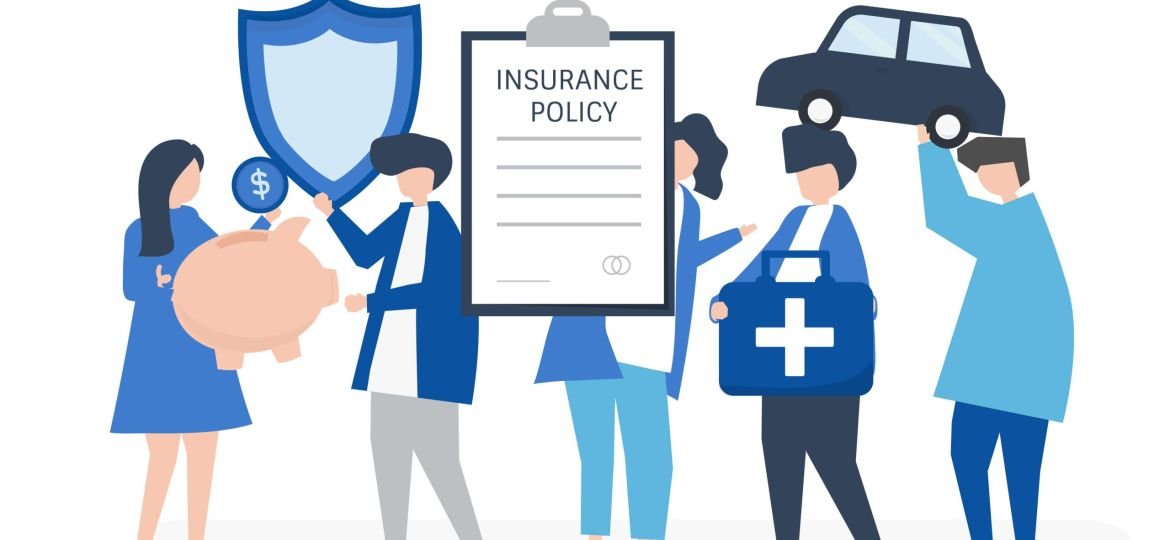
In today’s uncertain world, having the right insurance policies in place is crucial for safeguarding your financial well-being. From unexpected medical emergencies to natural disasters, life is full of unpredictable events that can quickly derail your financial stability if you’re not properly insured.
As a personal finance expert, I’m often asked which insurance policies are truly essential for providing comprehensive financial protection. In this in-depth blog post, I’ll explore the key insurance coverages you should consider to shield your finances from a variety of risks and ensure you and your family are prepared for whatever the future may hold.
The Importance of Insurance for Financial Security
Insurance is the foundation of a solid financial plan. It’s designed to transfer the risk of unexpected, high-cost events from you to the insurance company. By paying relatively small premiums, you can gain peace of mind knowing that you’ll be covered if a covered event occurs.
Without the right insurance policies in place, a single accident, illness, or natural disaster could wipe out your savings, retirement funds, and leave you saddled with crippling debt. This can derail all your financial goals and set you back years in your journey towards financial security.
Insurance provides a financial safety net that protects your assets, income, and loved ones. It ensures you don’t have to dip into your emergency fund or go into debt to cover major expenses, allowing you to stay on track with your long-term financial objectives.
Essential Insurance Policies for Financial Protection
So, which insurance policies are truly essential for safeguarding your finances? Let’s dive into the key coverages you should prioritize:
1. Health Insurance
One of the most important insurance policies you can have is health insurance. Medical emergencies and unexpected health issues can be extraordinarily expensive, with the average cost of a 3-day hospital stay exceeding $30,000. Without adequate health coverage, a serious illness or injury could leave you facing financial ruin.
Health insurance helps cover the costs of doctor visits, hospital stays, surgeries, prescription drugs, and other medical services. It shields you from having to pay the full out-of-pocket costs, which can easily reach hundreds of thousands of dollars for complex procedures or chronic conditions.
When choosing a health insurance plan, look for one with a reasonable deductible, copays, and out-of-pocket maximum. You’ll also want to ensure it covers the essential health benefits, such as preventive care, emergency services, maternity and newborn care, and mental health treatment.
2. Life Insurance
Life insurance is a critical safety net for your loved ones. In the event of your unexpected death, life insurance provides your beneficiaries with a tax-free lump sum payment that can be used to cover final expenses, outstanding debts, lost income, and other financial obligations.
There are two main types of life insurance: term life and whole life. Term life insurance provides coverage for a specific period of time, such as 10 or 20 years, while whole life insurance provides lifelong protection.
The amount of life insurance coverage you need depends on various factors, including your age, income, debts, and number of dependents. As a general rule of thumb, you should have a policy that’s worth 10-15 times your annual income. This ensures your loved ones can maintain their standard of living and achieve their long-term financial goals even if you’re no longer there to provide for them.
3. Disability Insurance
Disability insurance is designed to replace a portion of your income if you become disabled and unable to work. This coverage is especially important for those with physically demanding jobs or high-earning careers, as even a short-term disability can have a devastating impact on your finances.
There are two main types of disability insurance: short-term and long-term. Short-term disability insurance typically provides benefits for 3-6 months, while long-term disability insurance can provide coverage for several years or until you reach retirement age.
When selecting a disability insurance policy, look for one that covers at least 60-80% of your pre-tax income. You’ll also want to pay attention to the waiting period (the time between when you become disabled and when benefits start), the benefit period (how long the benefits will last), and any exclusions or limitations.
4. Homeowners or Renters Insurance
Homeowners and renters insurance are essential for protecting your personal property and your financial well-being in the event of a covered loss, such as a fire, theft, or natural disaster.
Homeowners insurance covers the structure of your home, as well as your personal belongings inside. It also provides liability coverage in case someone is injured on your property and you’re found legally responsible. Renters insurance, on the other hand, covers your personal possessions and provides liability protection, but doesn’t cover the structure of the rental property.
When choosing a homeowners or renters insurance policy, consider the value of your personal belongings, the cost to rebuild your home (if you’re a homeowner), and the amount of liability coverage you need. You’ll also want to review the policy’s deductibles, coverage limits, and exclusions to ensure you have the right level of protection.
5. Auto Insurance
Auto insurance is a legal requirement in most states, and for good reason. It protects you financially in the event of a car accident, covering the costs of property damage, medical expenses, and liability claims.
At a minimum, you’ll need to purchase liability insurance, which covers the damage and injuries you cause to others if you’re at fault in an accident. However, it’s also wise to consider additional coverage, such as collision insurance (which covers damage to your own vehicle) and comprehensive insurance (which covers non-collision-related damage, like theft or natural disasters).
The amount of auto insurance coverage you need will depend on your state’s requirements, the value of your vehicle, and your personal financial situation. As a general guideline, you should have liability limits of at least $100,000/$300,000 (for bodily injury) and $50,000 (for property damage).
6. Umbrella Insurance
Umbrella insurance is a type of liability coverage that provides an extra layer of protection beyond the limits of your other insurance policies, such as homeowners, auto, or boat insurance.
Umbrella insurance kicks in when the liability limits of your primary policies are exhausted, covering the remaining costs of lawsuits, legal fees, and judgments against you. This can be especially important if you have significant assets, such as a high-value home or substantial savings, that could be at risk in a liability claim.
Umbrella insurance policies typically start at $1 million in coverage and can be increased in $1 million increments. The exact cost will depend on your location, assets, and the amount of coverage you choose, but it’s generally quite affordable, often costing just a few hundred dollars per year.
Ready to take control of your finances? Visit upgrade.com now to explore a range of financial products, including Personal Loans, Auto Refinance Loans, Home Improvement Loans, Personal Credit Lines, and Upgrade Card. Let Upgrade help you achieve your financial goals today!
Evaluating Your Insurance Needs
Now that you understand the key insurance policies essential for financial protection, it’s time to evaluate your current coverage and identify any gaps.
Start by reviewing your existing insurance policies, including your deductibles, coverage limits, and exclusions. Determine whether the coverage is adequate to meet your needs and protect your financial well-being.
Next, consider your personal and family circumstances, including your age, income, assets, debts, and dependents. This will help you assess the appropriate coverage amounts and types of insurance you should have in place.
It’s also a good idea to periodically review your insurance needs as your life circumstances change, such as getting married, having children, or buying a home. This ensures your coverage remains aligned with your evolving financial situation and risk profile.
Conclusion
Comprehensive insurance coverage is a critical component of a solid financial plan. By investing in the essential insurance policies outlined in this blog post, you can safeguard your finances and provide a safety net for you and your loved ones in the face of unexpected events.
Remember, the specific insurance policies and coverage amounts you need will depend on your unique circumstances. Work with a trusted insurance professional to evaluate your risks, review your current policies, and design a customized insurance strategy that aligns with your financial goals and protects your long-term financial security.
Don’t wait until it’s too late to protect your hard-earned assets and financial well-being. Take the time to review your insurance coverage today and ensure you have the essential policies in place to weather any storm that comes your way.
Share Your Expertise, Build Your Business. Tired of limitations?
Create & sell online courses with Teachable. Keep 100% control. Start your free trial!


















